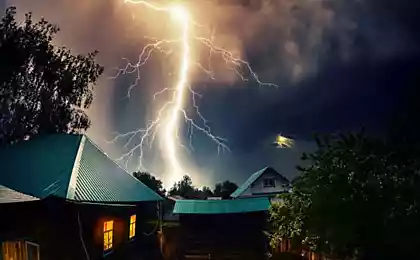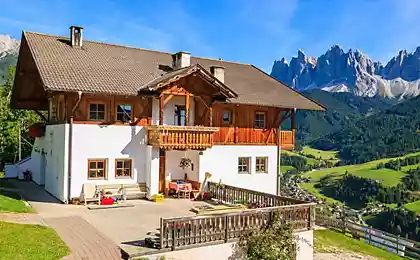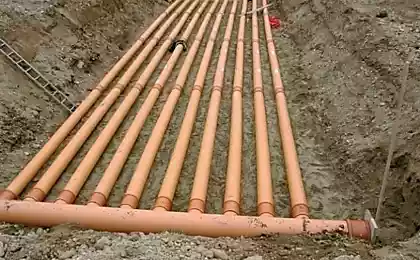201
A weather station for a country house
When living in a private house, maintaining a garden and garden, weather forecast and data accuracy play an important role. Watering gardens / lawns, spraying trees, planting and many other activities in the countryside are closely related to the weather.
Weather forecasts and weather data that give centralized channels of information have a big drawback. Data is given over a large area and can be very different from the actual weather in a given area. Therefore, a home weather station is increasingly becoming a necessary subject when living in your own home.
Weather stations vary greatly in functionality. There are simple, with the function of showing the temperature inside and outside the room. In more complex weather stations, the ability to show: humidity, pressure, weather forecast, wind speed and direction, precipitation level, UV, water temperature in the pond is added. Stations with the ability to connect up to 7 sensors that can show temperature and humidity in 7 different places. With increasing demands, manufacturers offer increasingly professional weather station options with high measurement accuracy.
This is what a professional weather station looks like. It is autonomous, thanks to solar panels. Includes a sensor-bucket for calculating precipitation, an anemometer, a temperature and humidity sensor.
Before buying a weather station, it is better to know all about its features and functions. Not all of them will be necessary, so it is important to study their list and analyze how much they will be needed in your home. Dozens of parameters on the screen can be confusing.
Let's go through the parameters that measure weather stations.
Temperature measurement is the most basic and important function of every weather station. Standard instruments are usually designed to measure temperature inside and outside. This is done with the help of special sensors, the internal is built into the device, but the external you will have to mount yourself, while you need to know that it should be about 2 m above the ground and can not be located under direct sunlight, otherwise the measurement will be inaccurate.
Humidity measurement. Humidity is also measured indoors and outdoors, meaning the amount of water vapor in the atmosphere. Our comfort and health depend on it. The optimal value of indoor humidity should be in the range of 40 to 60 percent, but, unfortunately, in the heating season, these figures are often lower. At the same time, an external sensor installed in the greenhouse will give you an understanding of how comfortable it is in the greenhouse.
Pressure measurement. Atmospheric pressure, which is measured in hectopascals (gPa), is an important parameter for meteorologists or people who are sensitive to weather changes. Pressure jumps can cause them headaches, bad mood. Pressure measures most weather stations. On the other hand, not every station gives maximum and minimum pressure for a specified time range.
Wind and rain. The precipitation level allows you to understand how well the soil is moistened, whether puddles and waterlogs are possible.
Sunlight and radiation.
Dew point. Many weather stations can measure the dew point. This is the temperature at which water vapor, taking into account atmospheric pressure, condenses, for example, to form fog.
Weather forecasting. Weather stations are not only used to measure the actual temperature, pressure and humidity, but also to predict the weather. Many models have this function, but the quality of the forecast is different for everyone. The market is dominated by stations that predict weather solely by analyzing trends in weather conditions, but this is often an inaccurate and short-term forecast. A more adequate result comes from models that have the ability to download data from the Internet from weather services, and based on their own indicators model the development of events.
Source: www.7dach.ru
Weather forecasts and weather data that give centralized channels of information have a big drawback. Data is given over a large area and can be very different from the actual weather in a given area. Therefore, a home weather station is increasingly becoming a necessary subject when living in your own home.
Weather stations vary greatly in functionality. There are simple, with the function of showing the temperature inside and outside the room. In more complex weather stations, the ability to show: humidity, pressure, weather forecast, wind speed and direction, precipitation level, UV, water temperature in the pond is added. Stations with the ability to connect up to 7 sensors that can show temperature and humidity in 7 different places. With increasing demands, manufacturers offer increasingly professional weather station options with high measurement accuracy.
This is what a professional weather station looks like. It is autonomous, thanks to solar panels. Includes a sensor-bucket for calculating precipitation, an anemometer, a temperature and humidity sensor.
Before buying a weather station, it is better to know all about its features and functions. Not all of them will be necessary, so it is important to study their list and analyze how much they will be needed in your home. Dozens of parameters on the screen can be confusing.
Let's go through the parameters that measure weather stations.
Temperature measurement is the most basic and important function of every weather station. Standard instruments are usually designed to measure temperature inside and outside. This is done with the help of special sensors, the internal is built into the device, but the external you will have to mount yourself, while you need to know that it should be about 2 m above the ground and can not be located under direct sunlight, otherwise the measurement will be inaccurate.
Humidity measurement. Humidity is also measured indoors and outdoors, meaning the amount of water vapor in the atmosphere. Our comfort and health depend on it. The optimal value of indoor humidity should be in the range of 40 to 60 percent, but, unfortunately, in the heating season, these figures are often lower. At the same time, an external sensor installed in the greenhouse will give you an understanding of how comfortable it is in the greenhouse.
Pressure measurement. Atmospheric pressure, which is measured in hectopascals (gPa), is an important parameter for meteorologists or people who are sensitive to weather changes. Pressure jumps can cause them headaches, bad mood. Pressure measures most weather stations. On the other hand, not every station gives maximum and minimum pressure for a specified time range.
Wind and rain. The precipitation level allows you to understand how well the soil is moistened, whether puddles and waterlogs are possible.
Sunlight and radiation.
Dew point. Many weather stations can measure the dew point. This is the temperature at which water vapor, taking into account atmospheric pressure, condenses, for example, to form fog.
Weather forecasting. Weather stations are not only used to measure the actual temperature, pressure and humidity, but also to predict the weather. Many models have this function, but the quality of the forecast is different for everyone. The market is dominated by stations that predict weather solely by analyzing trends in weather conditions, but this is often an inaccurate and short-term forecast. A more adequate result comes from models that have the ability to download data from the Internet from weather services, and based on their own indicators model the development of events.
Source: www.7dach.ru
Sunscreen will protect against jellyfish stings
People with severe injuries will be subjected to suspended animation























